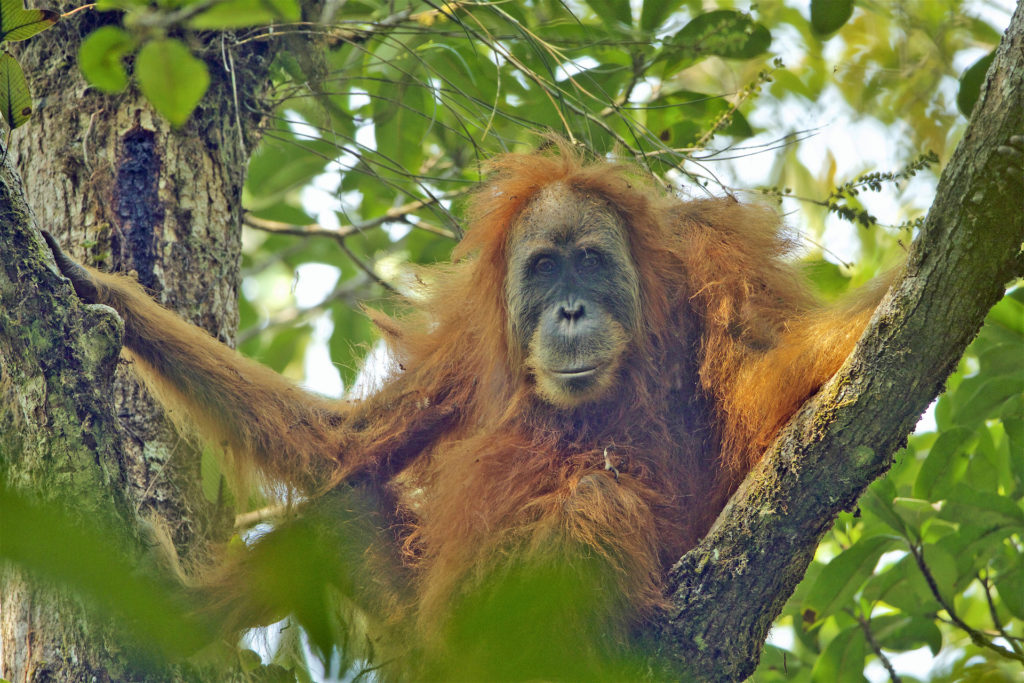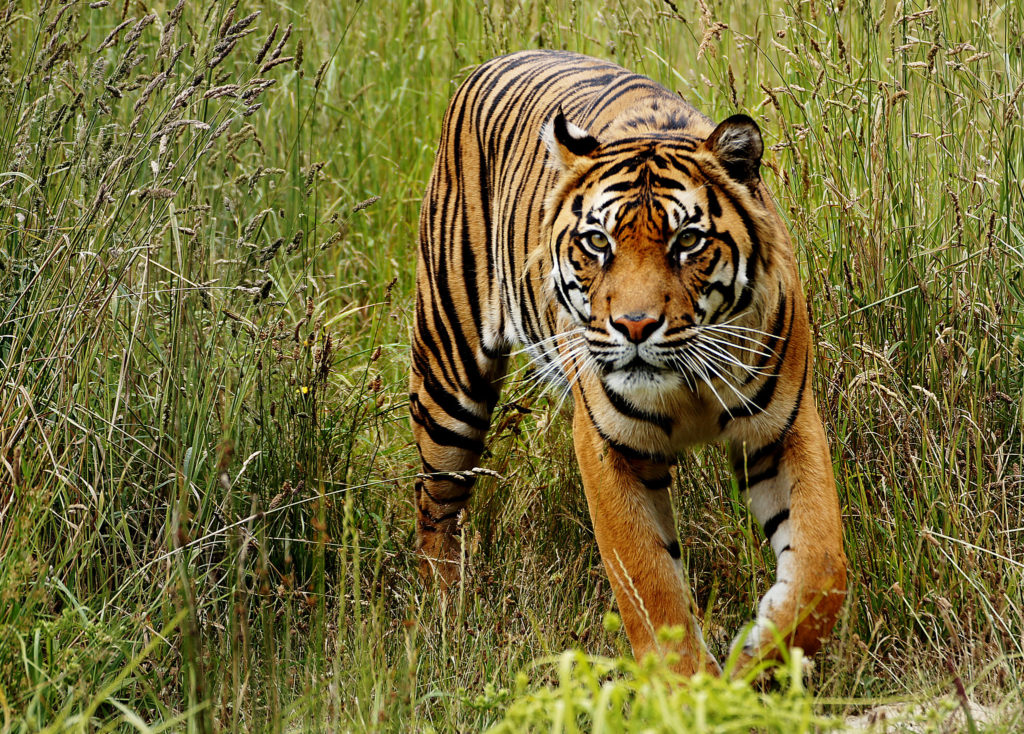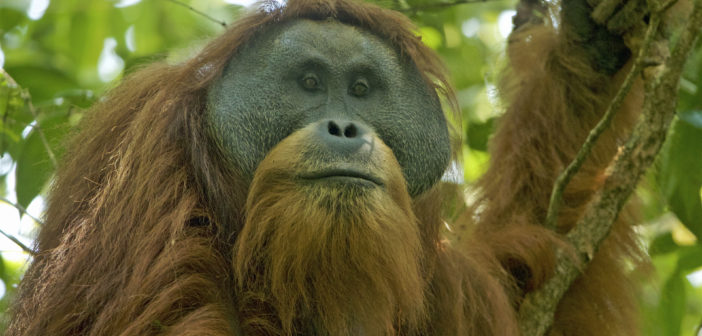Conservationists say a 510-megawatt hydropower plant that is being constructed in the Batang Toru forest on the Indonesian island of Sumatra threatens to further imperil the world’s rarest and most endangered great ape species.
The company building the power plant – PT North Sumatra Hydro Energy (PT NSHE) – says it has sufficient mitigation plans underway and the project’s impact on the Tapanuli orangutans will be minimal. However, a recent report states that the plant is unnecessary. An international group of scientists says it could sound the death knell for the Tapanuli.
Construction for the project is currently halted because of concerns about the spread of the novel coronavirus COVID-19 and experts from the International Union for Conservation of Nature (IUCN) say this is the perfect time to follow its recommendation and conduct an independent, objective environmental assessment “and develop a conservation management plan for the Tapanuli orangutan.”
The IUCN experts said: “In its headlong rush to earn a profit and complete the project, PT NSHE is willing to contribute to potentially the first great ape extinction in recorded history and the destruction of Indonesia’s precious natural heritage. We are not.”
The Tapanuli orangutan (Pongo tapanuliensis) was only described in November 2017. Fewer than eight hundred of them remain and the IUCN has already declared the species as critically endangered.

The Tapanuli’s geographic range is just 1,200 square kilometers.
The hydropower plant, which is expected to be operational by August 2022, would flood part of the orangutans’ habitat and the project includes a network of roads and high-voltage transmission lines that would fragment the primates’ habitat. Other endangered species would also be impacted.
The report produced by the energy consultancy Brown Brothers Energy and Environment (B2E2) states that the project’s infrastructure “will destroy or isolate three out of five habitat blocks.”
Those promoting the hydroelectric project point out that it would flood less than 0.1 percent of orangutan habitat. Those opposing it say the inundation zone is in the area where connectivity needs to be restored between the eastern and western blocks of Tapanuli habitat.
The B2E2 report about the hydropower project was commissioned by several NGOs, including the environmental advocacy group Mighty Earth, which is based in Washington, D.C..
It states that the Batang Toru plant is not necessary for meeting energy needs in the region.
Proponents of the power plant have also overestimated its value in fighting climate change while ignoring other options, the report states.
The power plant would use the gradient of the Batang Toru River to generate electricity through a diversionary canal and tunnel rather than a single large dam. The purpose of the tunnel would be to build up water pressure over more than a dozen kilometers to spin four turbines.
According to B2E2’s new economic analysis, the hydroelectric project, which is part of China’s controversial Belt and Road Initiative, is “an unnecessary endeavor.”
There may have been a rationale for the Batang Toru power plant when it was proposed in 2012, before the identification of the Tapanuli orangutan, and in a very different energy situation, the report states. “But there’s no need for it in 2020.”
PT NSHE says that the Batang Toru plant would reduce Indonesia’s carbon emissions by between 1.6 and 2.2 million tons per year. B2E2 says this estimate is between 33 and 55 percent too high.

Batang Toru ‘home to many rare and threatened species’
The B2E2 report points out that the Batang Toru ecosystem is home not just to the Tapanuli orangutans but also to many other rare and threatened animal and bird species. These include the Sumatran tiger (Panthera tigris sumatrae), the sun bear (Helarctos malayanus), the tapir (Tapirus indicus), and birds such as the Great Argus pheasant (Argusianus argus).
The ecosystem is also home to five other endangered and vulnerable primate species including siamangs (Symphalangus syndactylus) and agile gibbons (Hylobates agilis).
It is one of few areas in the world where three ape species coexist within the same geographical range.
The Batang Toru ecosystem is biologically diverse with more than 310 bird species recorded, along with eighty reptile species, 64 species of frogs and toads, and more than 1,000 tree species.
An international group, the Alliance of Leading Environmental Researchers & Thinkers (ALERT), has issued numerous statements about the fate of the Tapanuli orangutans and the dangers of the hydroelectricity project.
The project could be a death knell for the species, ALERT says, as it will slice across the most critical area of population connectivity for the ape.
“Orangutans are so sensitive to population losses that the mortality of just 1 percent of the population per year could drive the species extinct,” ALERT said.
For several years, the NGO PanEco, which is based in Switzerland, was highly critical of PT NSHE’s hydropower project, but it made a very controversial about-face in August last year. It signed a Memorandum of Understanding (MoU) with PT NSHE and is now cooperating on what it says are “concrete mitigation actions.”
PanEco said in a statement about the MoU that PT NSHE and PanEco had “agreed to end their differences and enter a new partnership with a comprehensive long-term perspective, to safeguard the entire Batang Toru ecosystem and a future for the Tapanuli orangutan.”
The CEO of Mighty Earth, Glenn Hurowitz, has accused PanEco of greenwashing and says that, according to PT NSHE’s own Environmental Impact Statement, the hydropower project is planned for a place “with almost three times the density of Tapanuli orangutans than the average in the Batang Toru ecosystem.”
This is an extract from Annette Gartland’s article on Changing Times. Please click here to read the full text.
Featured image: a male Tapanuli orangutan. Image credit Tim Laman, CC BY-SA 3.0.





